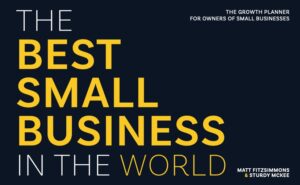Disruption
Where did Blockbuster, and Borders go? When is the last time you went to Sears, a company founded in 1893? Why did Kodak declare bankruptcy? How is it that Motorola is attempting a big comeback? And do you still, uh, Yahoo!?
What do these companies have in common? Their industries were disrupted. And not only did they not lead the charge, they were slow to adapt, if they adapted at all.
Adapt… or Die!
Henry Sanchez, MD in his Pathology class at the University of California, San Francisco (UCSF) used to chant a mantra peppered throughout his lectures, “Adapt… or Die!”. Ask anyone from UCSF if they took pathology from Henry Sanchez and they will respond “Adapt… or Die!”. He was referring to microorganisms, but the same applies to our businesses and our industries.
Adoption of Electronic Medical Record systems (EMRs) and billing platforms is a very basic example in the Physical Therapy industry. We know when EMRs are done right (and used correctly) that they save documentation time, automate claim submission, and provide reporting that helps us manage our businesses and teams. Yet, 71% of Physical Therapists are still using paper in some form to document treatment, and 38% of them are using paper exclusively.* These late adopters explain their rationale and reluctance to migrate to an electronic format, but if we’re being honest it’s really about comfort and inertia, and possibly fear associated with the change. The objective evidence argues for an electronic process. And those Physical Therapists using tools that improve efficiencies, convenience and the patient experience will end up with an increasing advantage in the marketplace.
Technology is but one area where disruption takes place. Business models are another, with a potentially more beneficial or harmful outcome than even technology. Think Blockbuster, Borders and Sears. Delivery models change, as with music and movies, enabled by technology. Employment models change with working from home (or the beach), implementation of clear accountabilities and less tracking of hours in the office, and systems to attract high demand employees.
Avoid, Be or Bridge the Disruption
When new technologies and business models emerge, business owners and entrepreneurs “must make a strategic choice between avoiding the disruption, being the disruption or bridging the disruption” according to Ashton Bishop, the founder of Step Change. Going premium is a potentially successful way to avoid disruption, essentially creating your own market, separate from that of the rest of your industry. Rolex is an example of a brand (so far) successfully avoiding disruption in the time piece industry by remaining, and even becoming more, of a premium brand. Rolex has in essence created its own market with a dedicated following and more people wanting their products than can be accomodated.
Being the disruption is something we’ve all seen a lot of in recent years. Lyft & Uber, AirBnB, Netflix and Amazon are only a few examples of this. Pinterest, Twitter, WeWork and Kabbage are more examples of companies that changed the rules by adding convenience, value, flexibility and time savings that their competitors did not. By being the disruption, they improved people’s lives and created new channels for people to buy.
Bridging the disruption brings elements of old and new together and allows for a comfort and ease on the customer’s part to embrace the change. Dollar Shave Club, Harry’s and Bevel are examples of this. In all cases the product is familiar, often improved, but the delivery model is new. Zappos is another example where the products are familiar, and the delivery model is new, adding convenience and eliminating fear with free returns, including paying for shipping.
LegalZoom and Nolo are examples in the services fields taking advantage of the lack of access by a large segment of the population unable to afford an attorney. The “incumbents” in the industry are not serving this niche, so the disruptors are seeking to fill this niche with similar services. What’s more, is that it is easy to see how people who might otherwise be able to afford an attorney and their services might choose to use the new, more affordable service in many situations. Could this change undermine traditional legal services, or at least a portion thereof?
How You Can Disrupt
Connections, networks and links between people and ideas can lead to creativity and strategies that can disrupt. Adaptability is another key component in weathering the change in society or an industry. As there will be changes, we can try to anticipate and create that change. If it is in the service of our customers, making their lives better, improving convenience, value, quality of their experience, or ease of use, then it is likely to work. And the best way to start coming up with potentially disruptive ideas is to listen to your customers. They may not come up with the solution, but they will definitely be able to tell you what problems they are facing that the solution will address.
An example close to home for me is that several years ago you could not get a cab in San Francisco. There are fewer than 2,000 taxi medallions (permits) for over 1 million people, when you add in residents, commuters and tourists, all regulated by the SFMTA. There has been a huge wait list for years to get a medallion. The supply was restricted while people needed rides. And, you could often wait over 30 minutes for a taxi and sometimes they would not show up at all. And if they did, they were often dirty or in disrepair. And it was not uncommon to see 50-100 of them in line at the airport waiting for a fare, essentially out of circulation for the residents of the City. In addition, you had to call a phone number and speak with a person, who often was talking to someone else, a driver or someone in the office, at the same time they were talking with you requiring you to repeat the address 3 to 4 times before they would get it right. And, to rub salt in this aggravation, they would not pick up at a street corner, but would require a numerical street address. Now, given that list of problems, is there any wonder that Lyft and Uber have taken over? It now usually takes 3 minutes to get a car at my house, and I don’t have to talk to anyone who will mess up the address and get distracted while talking to me. The destination is already entered, and no cash changes hands. On top of that, I get a discount and so does anyone who I share these services with! It’s awesome.
If you start asking your customers what the problems are around being your customer, as they see them, and make a list of those problems, can you then start coming up with solutions to address at least some of them? You don’t have to come up with the next Uber. You can start small by solving some of the annoyances and inconveniences your customers are experiencing. Make their experience better by improving convenience and increasing value a little at a time. A few little improvements start to become big improvements, and may even eventually lead to breakthroughs.
If we don’t start creating disruption, we will become subject to it sooner or later. Review your current strategy and consider how disruption may impact your plans. Are there new entrants into your industry that are stirring things up a bit? Even if you don’t think they are doing it right, are they on to something? What need are they trying to fill? What problems are they trying to address?
Now, what problems do you see? What processes can you anticipate and implement that will enable your company to be an innovator and disruptor?
And finally, since you’ve read this far, please share the advice you would give to business owners in healthcare who are facing disruption in their near future? Please share in the comments below.
* http://www.apta.org/EHR/Guide/Decision/
Photo Credit: http://www.innevation.com

6 thoughts on “Disruption”
Absolutely! Well said.
What next?
Sturdy,
Really enjoy the Avoid, Be, or Bridge the Disruption. Resonates really well with what entrepreneurs need to do to not only survive but to grow and prosper.
What are the top problems in PT right now?
Poor quality of care
Inconsistent care (seeing a different PT every time you come in to a clinic)
Poor definition of what PT is and what it can do
Corporate feel to all the large PT practices and hospital/ physician owned players
Poor results
Not sure what the “Uber” for PT is though…I know some of what we do can be done through telemedicine, but some of it can’t.
Great ‘food for thought’. Thanks Sturdy.
As a whole, business owners and staff often cherry pick the satisfied customers (patients) and foster healthy relationships with them. And seek testimonials or on-line reviews from them. But does not the customer that has expressed frustrations with the front desk, or disgruntled because of challenges getting in due to busy schedules, or complain because they feel they were not educated enough on their insurance benefits afford us opportunity to improve area that may have deficiencies in process or systems. If we keep doing what is always commended and praised by customers, and that is it, we are not challenged nor do we/the business improve and grow. This affords an opportunity to ‘bridge’ a disruption by our second greatest asset – our customers.
Issues in PT…
Administrative cost of increased payers requiring authorization and the cost and time of fighting denials, increased therapist time for authorization paperwork and appeals, competition of hospital, physician and corporate owned physical therapy, and staffing therapists with the competition of the higher paying corporations. Patient frustrations…required insurance paperwork, scheduling appointments, and loss of personal care at hospitals and corporate clinics.
Not sure of solutions for the first list of issues, but for the patient issues, automating the paperwork and scheduling with a patient portal would provide convenience and appears to be the trend.
Very well stated Sturdy.” If we don’t start creating disruption, we will become subject to it sooner or later. “
Comments are closed.